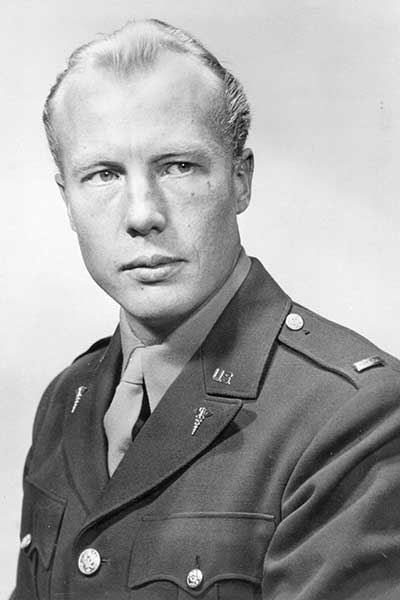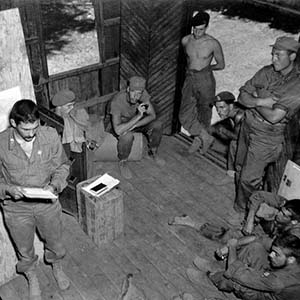Dr. Christian J. Lambertsen was a pioneer in underwater operations. While a student at the University of Pennsylvania, he developed a closed-circuit underwater rebreather. A true innovation, it allowed the swimmer to remain underwater for longer periods and prevented detectable bubbles from escaping to the surface.
In 1942, Lambertsen demonstrated the system to representatives of the wartime Office of Strategic Services (OSS), who recognized its combat potential. After graduating in early 1944, Lambertsen was commissioned in the U.S. Army Medical Corps. Once in uniform, he was assigned to the OSS Maritime Unit, where he instructed swimmers in the use of his system, dubbed the Lambertsen Rebreathing Unit (LARU).
After the war, he coined the term Self-Contained Underwater Breathing Apparatus (SCUBA), and worked with the U.S. Army, Navy, Coast Guard, and non-military agencies such as the National Oceanic and Atmospheric Administration (NOAA) and the National Aeronautics and Space Administration (NASA). His innovations have helped shape U.S. Army underwater operations to this day.
Dr. Lambertsen was a staunch preserver of the history of the OSS MU. This page features materials graciously donated by his family to help foster an understanding of the legacy of Dr. Lambertsen.















































